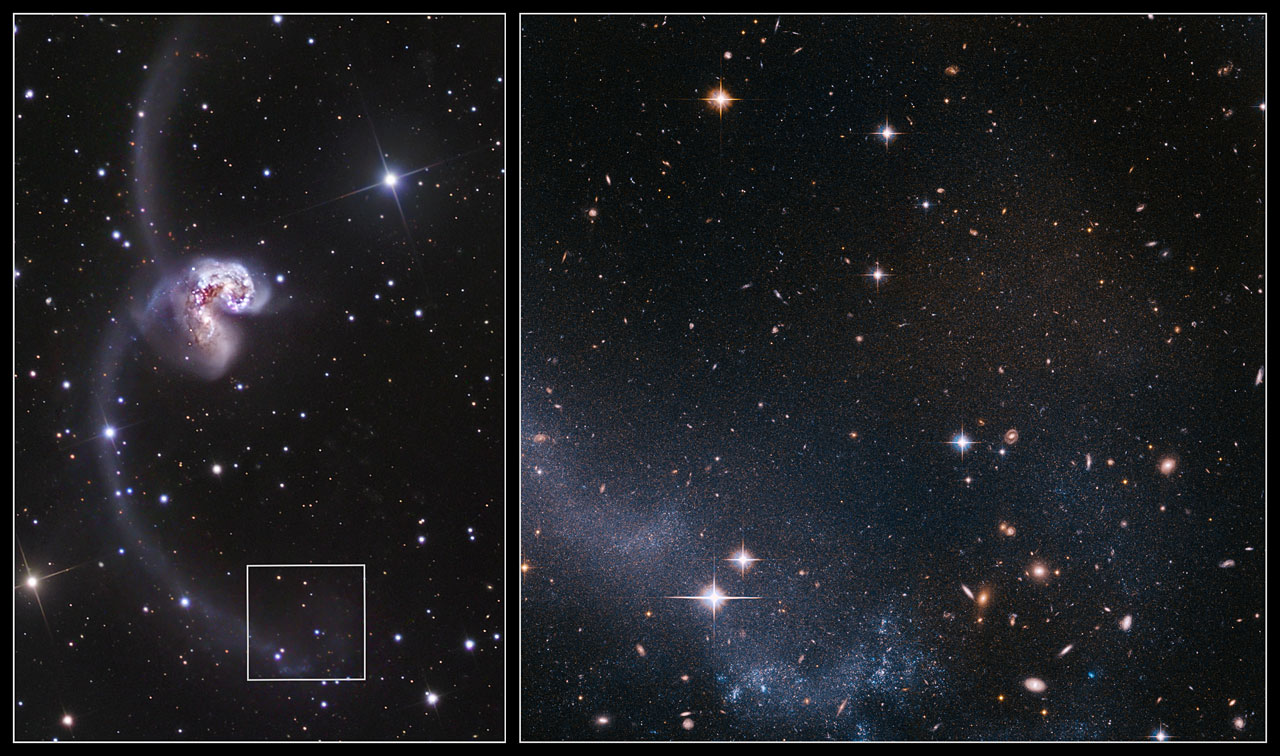It’s time for another beautiful image from the Hubble Space Telescope. And this time, there’s an added bonus… video. The latest images released by Hubble are based on research of the Antennae Galaxies, known as NGC 4038 and NGC 4039. Astronomers used to think that they were 65 million light-years away, but the new research puts them much closer; probably 45 million light-years away.
This image was captured by Hubble’s Advanced Camera for Surveys and Wide Field Planetary Camera 2, to observe individual stars spawned by the cosmic collision.
Here’s the Hubble video to help you get a sense of the scales involved (with pretty music too).
The astronomers targeted the object’s southern tidal tail, which was thrown away from the active central regions. This tail contains material hurled away from the main galaxies as they came together. Astronomers looked for older red giants to make the estimate for their distance. These red giants are known to always shine with the same brightness, and by knowing this brightness, they were able to calculate the galaxies as being 45 million light-years away.
Since this galactic merger is happening relatively close, it’s one of the best examples astronomers have to study this process. And now that the galaxies are closer than astronomers previously believed, it changes the size of many objects the astronomers are studying. For example, the size of the star clusters being formed by the collision match the size of other galaxy mergers, instead of being 1.5 times larger than they should be.
The Antennae Galaxies are named for the two long tails of stars, gas and dust thrown out of the collision that resemble the antennae of insects. They can be found in the constellation of Corvus, the Crow.
Original Source: Hubble News Release

